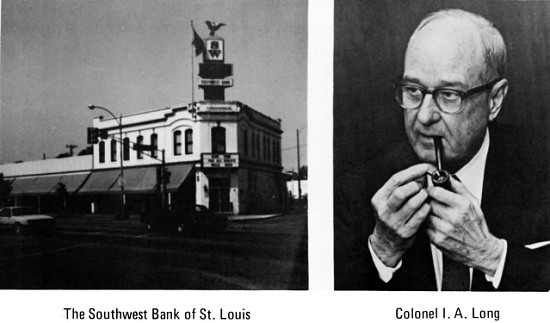| Gateway Heritage, Journal of the Missouri Heritage Society, St. Louis,
Missouri Winter 1981-1982. The Southwest Bank of St. Louis is doing quite well, thank you. And it has a Superb Mechanical Bank Collection. The I. A. and Lynda Long Collection of Mechanical Banks  by Colonel I. A. Long In the years after the Civil War, the whole American nation seemed on the move. Steamboats sailed circles around their win-powered sister ships, the iron horse beat the stage coach and the pony express across the continent in record time, and in popular journals the dream began to be expressed that self-propelled vehicles some day would replace "Old Dobbin" on city streets. Mirroring this trend in the adult world, toy makers began to design playthings that incorporated motion. For centuries, children had propelled toys largely through their own physical effort. After the Civil War, toys appeared which emphasized a world filled with rapid movement. Toymakers who specialized in the manufacture of savings banks were no less affected by this trend to motion than other manufacturers of playthings. The bank makers additional emphasis was on thrift, a virtue invented long before America came into existence as a nation. Through out history toy banks have been used to encourage children to save their coins. Back in the Greek city-states, children were taught to drop their coins into pottery vases; in 17th century England, children were shown how to fit coins of the realm into pottery and porcelain containers; and in colonial America, craftsmen cast banks from clay and whittled them from gourds, shells and wood. |
